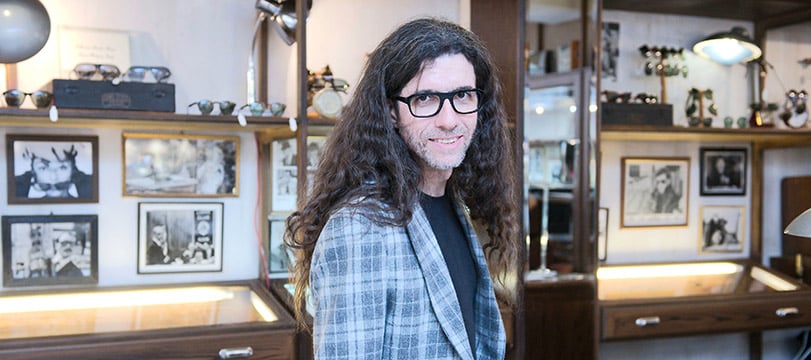
05:40 -
© Charles Mosa
If you’ve always dreamt of wearing the same original Persols as Steve McQueen, a pair of the first Ray-Bans designed for the US Army, or of finding that style your grandmother wore back in the 1970s that was the stuff of family legend, then Charles Mosa is your man. The optician and antique eyewear collector has spent much of his life scouring dusty warehouses for treasures, building a collection that now spans 150 years of glasses history. EYESEEmag sat down with him, in one of his Paris stores.

Charles Mosa:My interest in vintage glassesgrew as my career as an optician progressed. I started in eyewear boutiques where I sold classic models, then styles by Alain Mikli’s generation of designers. Around 2005, I noticed that even the designers were frequently coming back to vintage glasses for inspiration. I had a small personal collection of antique glasses that I put in the shop window and people were immediately interested enthusiastic, even though they weren’t actually for sale. I had previously been a sales rep and had a few manufacturing contacts in the Jura and in Italy. I got in touch to find out whether they had any old stock and when I started knocking on doors I found warehouses of stock that sometimes dated back more than a century. I spent several years building up my own stocks, with the goal of opening a shop to sell vintage glasses. They are all brand new original old glasses, never re-issues.
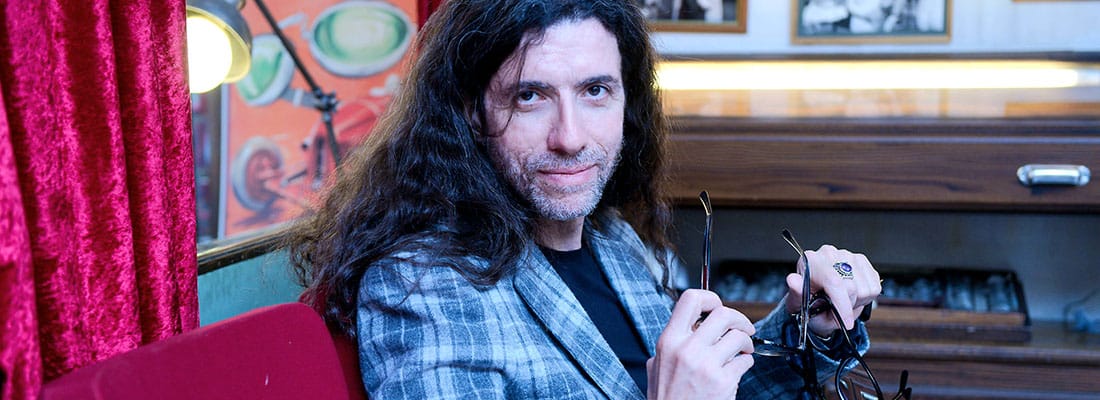
We have come across some problems with certain styles and materials, but we have a workshop that’s now specialized in working with them. A pair of glasses that has been in storage for 40 years, even perfectly well stored, will sometimes have deformed a little. Sometimes they need a refresh, sometimes the lenses need to be changed to meet modern standards. Obviously, we don’t touch exceptional lenses like the Bausch & Lombs that were in the first Ray-Ban aviators used by the US Army, and other legendary brands.
Adding new prescription lenses to vintage glasses is almost exactly the same process as adding them to modern frames. The difficulty lies in manipulating the material, as materials like acetate can be of a different quality in vintage glasses to what would be used today. Market demand is currently so high that acetate is produced using lean manufacturing processes. We don’t let the solvents evaporate completely before we start working with it, which means that the material will continue to work, a little like young wood, which isn’t ideal from a quality point of view. Old materials lost their acetone a long time ago, because at the time acetate wasn’t delivered until it had had time to dry and added to that, these are glasses that have been in storage for many years. To the touch – and to work with – it feels like a natural material like horn, tortoiseshell, galalith or wood, because it’s free from its chemical solvents and is now essentially made up of cellulose from wood or cotton. When you work with objects as old as that, you work with respect and avoid any tension in the frames. Vintage glasses made from acetate repurposed carefully in this way, will bow and deform a lot less than modern frames.
We have made so much technical progress in the intervening years when it comes to lenses, that we can adapt them to almost any kind of glasses. There are a few points to know if you’re looking at vintage frames, like avoiding the oversized frames of the 1970s if you are very short-sighted, for example and of course, if your vision changes, we can usually refit your favorite vintage glasses with new lenses, several times over the years if need be. It should also be said that back in the day, people didn’t buy glasses with a view to keeping them for a year or two like we do today. We bought less, looked after things and kept them for longer. The quality of vintage glasses, just like the quality of the acetate I was just talking about, was much higher than it is today. Any good optician, working carefully, can change the lenses in vintage glasses, except perhaps for very old antique styles like certain pince-nez and face à main, which owe more to watchmaking.
“It might be the best-known, but Ray-Ban isn’t the only glasses manufacturer to make sunglasses for the US Army. Its legendary Aviator style was first created for the US military and has been much re-issued and often copied. The originals weren’t quite what we know today, the lenses were exceptional lenses made by Bausch & Lomb or American Optical and were thicker than the modern lenses as they had to meet military standards in terms of withstanding shocks, sun protection and visibility. Even today, they are still considered top-tier lenses.”
“In the end, all suppliers to the US Army produced very similar shapes, that protected the wearer’s eyes not only from the sun, but also from the air at high altitude via a wrap-around design with an anti-sweat bar to prevent droplets from falling in the eyes and arms that fitted around the ears to prevent slippage. Moreover, the ‘aviator’ shape wasn’t as triangular as the post-war models that we know today, as the maximum diameter of mineral lenses produced at the time meant that shapes had to be more rounded, which also produced beautiful glasses.”

Since I started building up my stock, I think I must have found around 100,000 pairs of vintage glasses. We have sold a lot and of course we’re still looking for more. What’s quite funny, is that vintage glasses trends can move quite fast. Styles that don’t seem that old to me and to which I might not have paid that much attention a few years ago, like glasses by Fred and Cartier from the 1990s, or the Jean-Paul Gaultiers that were made in Japan, are now quite prominent in vintage. They are already more than 20 years old and are very successful with our clients.
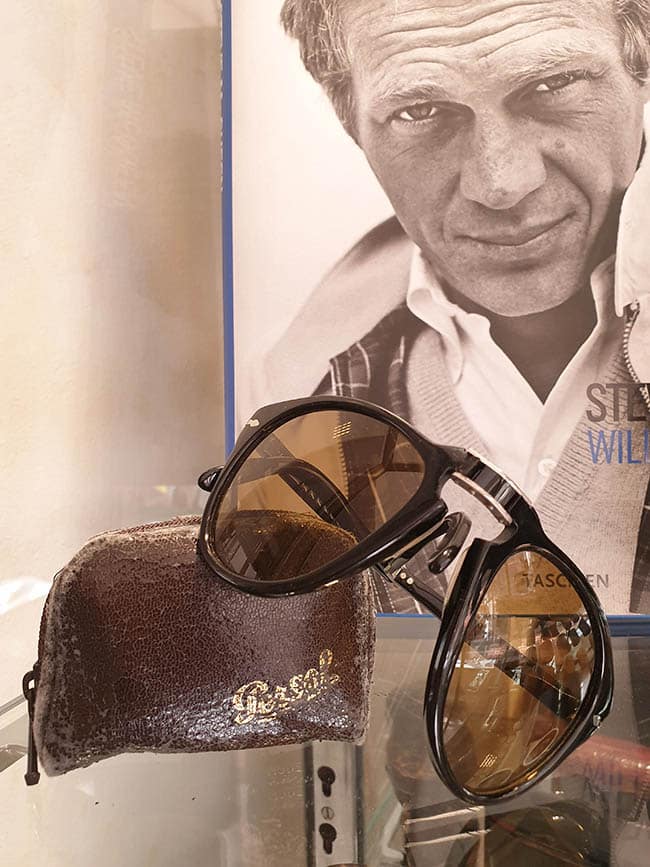
© Persol
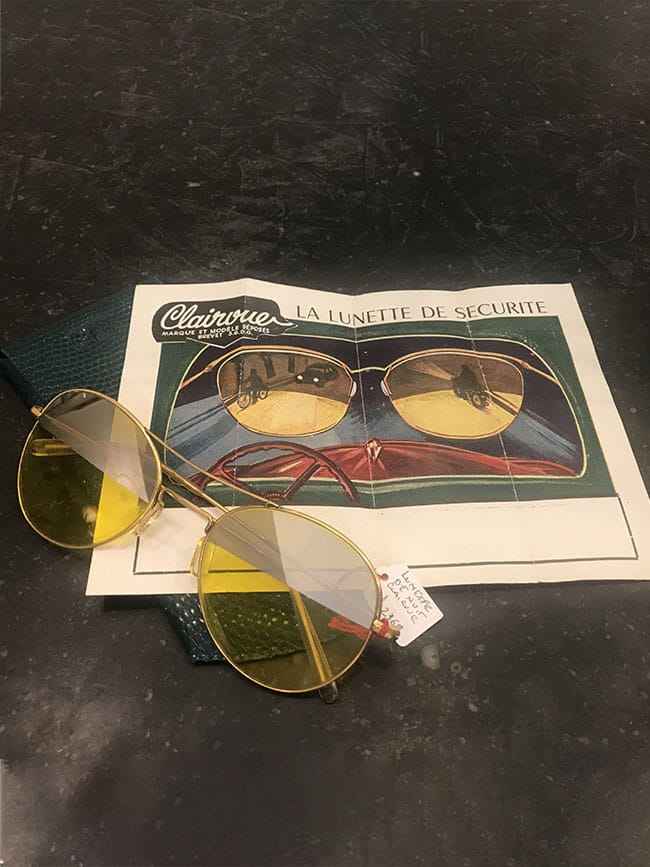
© Clairvue
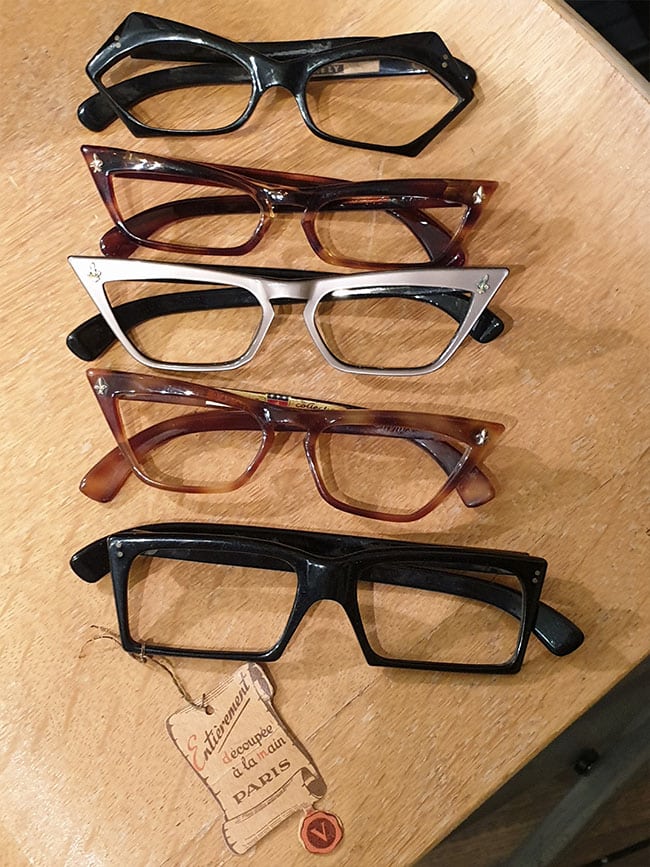
© Creation FR 1960
I spent a long time looking for my first folding Persols, the ones worn by Steve McQueen, the ‘real’ 714 from the 1960s. It’s a style that’s very well-known to the public because it’s been re-issued, but originals are very hard to find. The 1960s version is also a little different to the modern one, both in shape and the way it’s articulated.
The Oliver Peoples glasses worn by Brad Pitt in the film Fight Club is also very rare. I only ever found one pair and an American client called me immediately to buy them. It’s funny, because they had been out for a year already without much success before being worn by Brad Pitt and Oliver Peoples had probably not anticipated such commercial enthusiasm, as they didn’t bring the style back out again after the film.
There are also unsigned, yet truly exceptional styles, like the vintage metal glasses from the 1930s that can feature absolutely magnificent guilloché* work. It’s practically silversmithery.
I also like forgotten brands like Amor, a French brand that our parents used to wear, which made very high-quality glasses and had a great deal of style. For me, it recalls the Trente Glorieuses post-war period, when France was a little more insouciant than it is today.
I’m also interested in old work glasses and technical glasses worn by solderers and mountaineers. Right now, we have a pair of driving glasses called La Clairvue (NDLR:the ClearView), sold with its original leaflet. It was designed for night driving and each lens was split into two: the upper half prevented drivers form being dazzled and the bottom boosted night vision.
Some models are so rare that we find it hard to let go when we put them on sale. We often get hold of big lots of vintage glasses, in different sizes, which means we can offer a range of models at various price points, starting from €80. We have a huge choice of shape and style spanning 150 years of glasses history, going right back to very old styles, like pince-nez, for enthusiasts. Today, glasses-wearers look to vintage for a way to personalize their look with unique frames that can be adapted perfectly to their requirements.
The oldest pieces in our collection is a pair of silver glasses from the early 19thcentury. We also have more sophisticated and intriguing pieces, undoubtedly made by watchmakers, like rings that house lenses that could be unfolded for use. At the time, only people of a certain social standing could afford the luxury of glasses and they didn’t become more widespread until the late 19thcentury, notably thanks to manufacturers in Morez, in the Jura region of France. They were simple glasses, sold on markets, in standard round shapes that are often seen in antique prints.
*Guilloché: Adornment through a repetitive or interlacing pattern of engraved lines